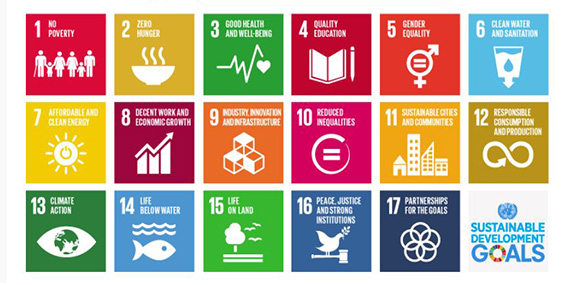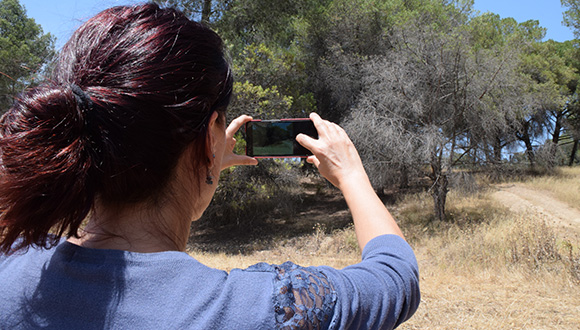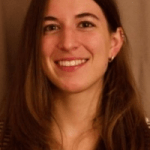Citizen science is a data source to fill sustainable development goals
Monitoring progress on the UN Sustainable Development Goals (SDGs) requires a huge amount of data. Citizen science could help fill important data gaps according to a new study published in Nature Sustainability. The research, led by IIASA, has involved a large community of citizen science experts from around the world, including Joan Masó, a researcher at CREAF.
Citizen science holds major potential to contribute data for monitoring progress on the UN Sustainable Development Goals (SDGs), according to a new study published in Nature Sustainability. The paper, which grew out of a workshop held at IIASA from 3 to 5 October 2018, describes current examples of citizen science data being used for SDG monitoring, potential areas that citizen science projects could contribute, and provides a roadmap to increase the use of citizen science data in areas where more data is needed.

"This work represents the continuation of ConnectinGEO, a project led by CREAF that was born to support the pursuit of SDGs. The objective was to study the usefulness of land observation data and to put them in value. What we demonstrate is that the observation of the earth with conventional techniques such as satellites and drones is useful in some cases but not enough. In this work we analyze how citizen science can contribute to the observation of the earth", says CREAF researcher Joan Masó, a study co-author.
Citizen science has great potential to provide data that helps track the progress of the Sustainable Development Goals (SDGs)
Tracking progress on the SDGs is a massive exercise in data collection and management. The 17 goals set by the UN in 2015 include 232 indicators. Of those, 88 require data that is not universally or regularly collected, and another 34 need data for which there is no international standard methodology for data collection. Even for the 104 indicators that do have regularly collected data, non-traditional data sources including citizen science could help increase the frequency or reduce costs.

“Through citizen science, people around the world could become much more involved not only in monitoring these indicators, but also in implementing the sustainable development agenda,” says Steffen Fritz, leader of the IIASA Center for Earth Observation and Citizen Science and first author of the research.
“Through citizen science, people around the world could become much more involved not only in monitoring these indicators, but also in implementing the sustainable development agenda,” says Steffen Fritz, leader of the research.
For example, people around the world are contributing important data on biodiversity through long-running citizen science projects observing wildlife. The volunteer organization BirdLife provides international data on bird sightings that is used by official international organizations monitoring endangered species. On a national level, some countries are using citizen science as a way to increase data collection or to reduce costs: in the Philippines, for instance, citizen scientists are collecting household census data on poverty, nutrition, health, education, housing, and disaster risk, which is being used in the country’s official reporting to the UN.

One barrier to the use of citizen science data is a concern about data quality: How does data collected by volunteers stack up against official data sources collected by experts? In fact, research by IIASA and CREAF scientists has shown that through training, feedback, and other best practices, data gathered by non-experts can rival that collected by scientists, often at a much lower cost.
“Some of the CREAF citizen science initiatives, such as Mosquito Alert, Alerta Forestal or RitmeNatura are among the projects chosen to exemplify the potential of citizen science" finalizes Joan Masó.
Particularly for the 34 SDG indicators where there is no standard international data source, the researchers see major potential for citizen science in closing the gaps. For example, one area with lacking data is marine debris, or ocean litter. Although the issue has gained great interest from the public, data collection currently relies mainly on visual observations by scientists, with no internationally agreed protocol. Citizen science projects to measure and record pollution are being incorporated to a growing extent in public projects to clean up beaches or waterways.

The researchers say that this involvement could bring benefits beyond just data.
“Some of the CREAF citizen science initiatives, such as Mosquito Alert, Alerta Forestal or RitmeNatura are among the projects chosen to exemplify the potential of citizen science. This potential is not limited to the pure collection of data, and goes further, creating a social awareness about the problems that the planet faces in the 21st century", finalizes Joan Masó.
Source
Citizen science for sustainable development
Reference
Fritz S, See L, Carlson T, Haklay M, Oliver J, Fraisl D, Mondardini R, Brocklehurst M, et al. (2019). Citizen science and the United Nations Sustainable Development Goals. Nature Sustainability. DOI: 10.1038/s41893-019-0390-3 [pure.iiasa.ac.at/16094]







